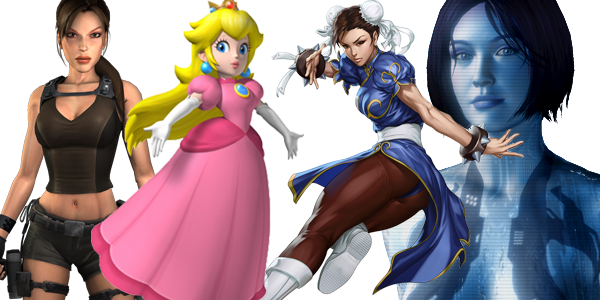No More Fun And (Video) Games

Are females represented enough in video games?
August 27, 2014
Video Games have conventionally been more of male dominated activity–after all, the most popular games almost always has male main characters, so why would women be interested in them anyway, right? Wrong. According to the Entertainment Software Association (ESA) 48% of gamers are female, making up about 50% of sales. If this is the case, then why do video games (most popular, at least) have a significantly lower amount of female characters than male characters? There’s only one answer for that: Misogyny–it’s alive and well, people.
Webster defines misogyny as the “dislike of women or girls,” and this dynamic is the rationale behind the lack of female characters in video games. Although this explanation seems to unequivocally explain this conundrum, excuses like “A female character means that you have to redo a lot of animation, a lot of costumes…[and] It would have doubled the work on those things” (James Therein) are still made. Instead of developers simply admitting that they view women as less interesting, they make up lazy excuses like “it’s too much work to make one single female protagonist.” Luckily, excuses like these are easily nullified by honest people that exhibit the highest level of candor and sagacity. One person that demonstrates this forward-thinking mindset is Jonathan Cooper. Cooper, a former Assassin’s Creed designer, shot down Therein’s claim and admitted that it would only take a couple of extra days to create a female character.
Even though several of today’s most popular video games implement very little female representation, one could still argue that there are still some games out there that do; however these games often characterize females in a very demeaning manner. A majority of female protagonists are often overly sexualized with disproportionate body dimensions, like, for example, the female characters in Dragon’s Crown, who have “breasts literally bigger than their heads with rear ends to match” (Danielle Riendeau). Also, female protagonists are often subject to domestic and/or sexual violence, for example, in Rockstar’s popular video game, Grand Theft Auto V, female characters are relegated to inferior roles, such as, strippers, prostitutes stay at home moms, etc. So, even when women are represented in the video games, it is not the representation they seek, it is worsening their stance in society, and perpetuating female gender stereotypes. This is what the children of our generations to come are observing; a change needs to be made.
In summation, gender inclusion has been a main struggle for the gaming industry for quite some time. This is a societal issue. We, as a society need to fix it, and it’s up to us, to make the change, and in this case, the women of this society need to persevere. No more dilly daddling, ladies–let’s show these men what we can really do. Let the (female) developing commence!


